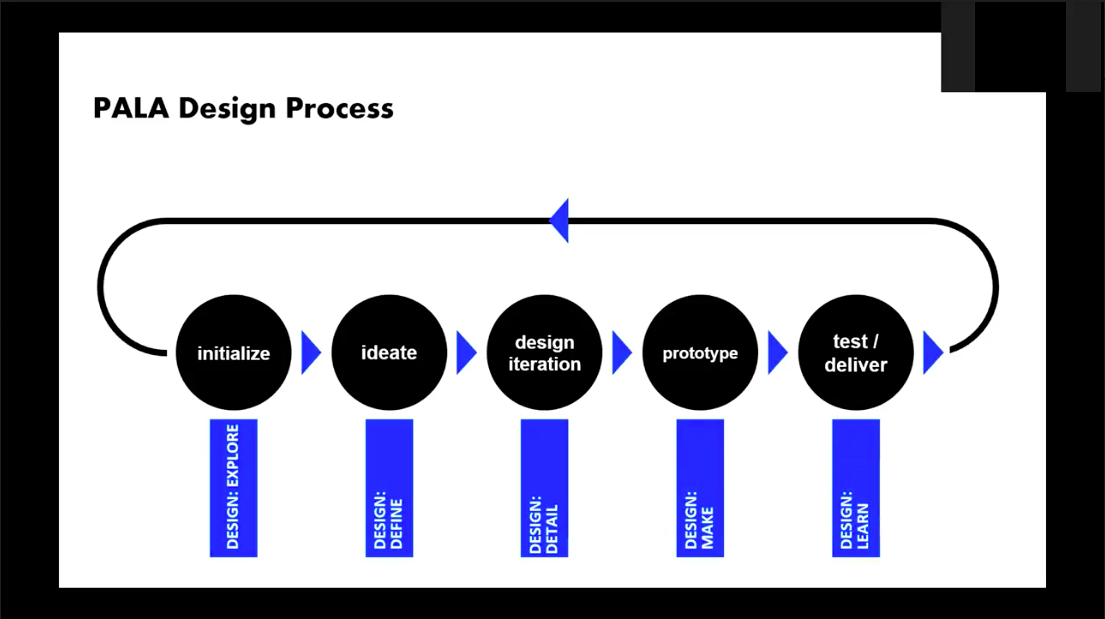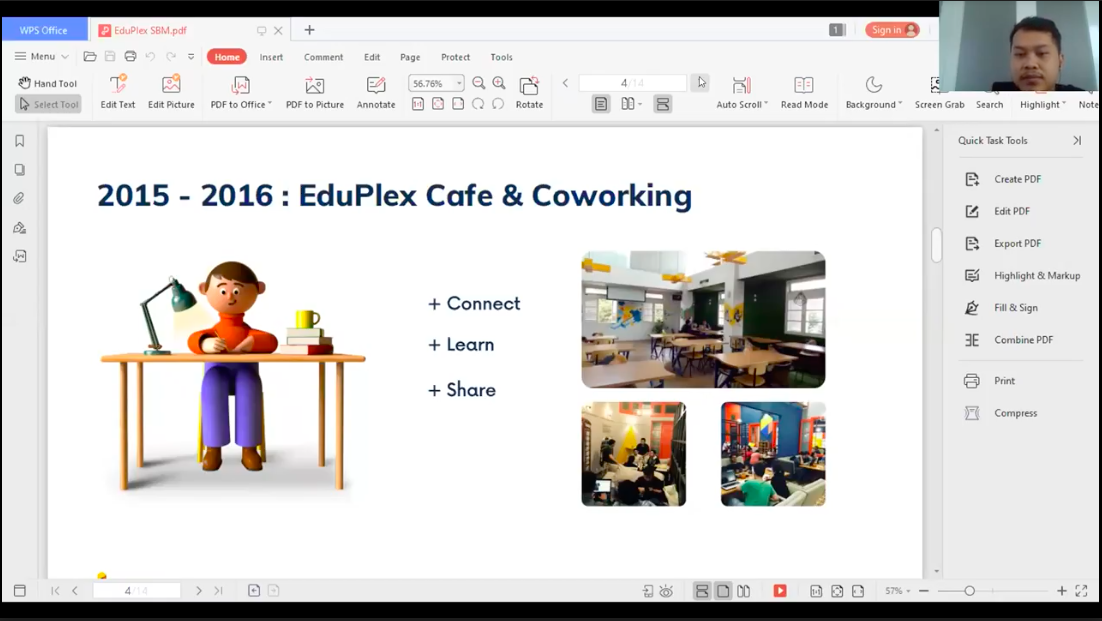PALA Nusantara emphasizes not only simplicity but also taking advantage of the abundance of Indonesian natural resources. PALA Nusantra wants to be different but not too traditional and foreign to international customers, so there is also a sense of modernism in its products.
 Slamet Riyadi, the Co-Founder & CDO of PALA Nusantara, introduced the company in his presentation and elaboration of the concept building, Monday (14/6/2021). At the same time, Cahyoga Agung Yuliawan, the General Manager of PT. Eduplex Indonesia presented Eduplex’s design and how it was built in 2014 through an opportunity that many did not realize.
Slamet Riyadi, the Co-Founder & CDO of PALA Nusantara, introduced the company in his presentation and elaboration of the concept building, Monday (14/6/2021). At the same time, Cahyoga Agung Yuliawan, the General Manager of PT. Eduplex Indonesia presented Eduplex’s design and how it was built in 2014 through an opportunity that many did not realize.
Starting with the concept that Slamet brought up, the three different colors that PALA decided to follow through: red, brown, and blue —representing the three chosen tribes in Indonesia, Toraja, Jawa, and Baduy, respectively. These colors that loved by the customers, later became the starting point of PALA to pique the interest of its market in Indonesia.
“This concept was what raised the question: who is PALA for?” Slamet stated, to which he continued with, “though we decided not to overthink in the beginning. It was not something we focused too much on. We went with the flow and thought that suggestions for the betterment would come later on for future improvements. Instead, we focused on building our brand, a name for our company.”
PALA’s design process can be divided into five stages: initialize, ideate, design iteration, prototype, and deliver. However, these stages have different goals. For instance, looking back to the PALA VARNA concept, the first stage aims to explore the idea (the potential candidates of products that can be made from wood and leather), the second aims to define the idea (the chosen candidate will be the main focus), the third aims to detail the idea (the chosen candidate will be further discussed and specified), the fourth aims to make the idea come to life, the last stage aims to learn (prototypes will be improved further).
Afterward, PALA created a combination of symbols, metaphors, and stories to establish the brand experience. Brand experience comes from the idea put into PALA products, which is the elaboration of various cultures in Indonesia. Combining modern concepts and traditional backgrounds enhances the experience that customers get from using and supporting local products.
Later, Cahyoga initiated his session by explaining the origin of Eduplex, “In 2014, carrying laptops around was not a common occurrence. The shift was obvious as cafes began to add plugs and Wi-Fis instead of merely serving food and drinks. Still, not a lot of cafes understood the potential. Hence, the birth of Eduplex Cafe.”
Due to the ongoing technological development trends, Eduplex grew with their advantage, that was the understanding of the opportunities of study cafes. Eduplex then came with three main missions: connect, learn, and share. They were rooted in the initiation of Eduplex itself. For example, for businesses and individuals to grow, networks and connections are important. Unfortunately, not many places offer this, so Eduplex Cafe attempted to provide such. Aside from connecting, Eduplex also aims to create a space for people to learn outside the classrooms or schools. Last but not least, Eduplex intends to provide room for people to grow through knowledge sharing.
However, as the pandemic struck in 2020, consumer behaviors changed unpredictably. It became a challenge for Eduplex as their main scope is providing a coworking space for people. “Despite the challenges, we tried to see it as an opportunity, the mindset that an entrepreneur must have to strive,” Cahyoga highlighted.

Written by Student Reporter (Mitsal Athaya, Management 2022)




